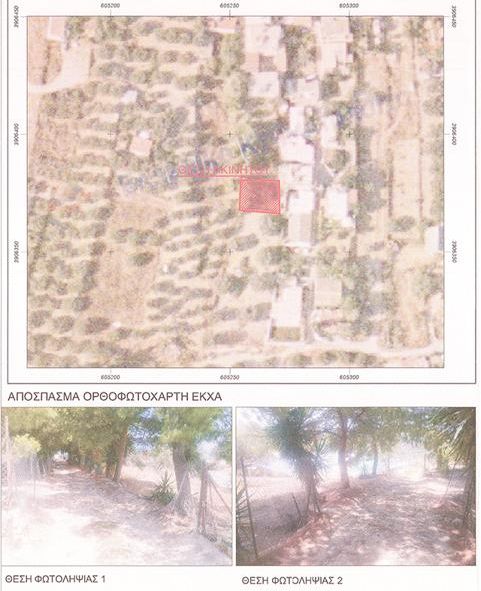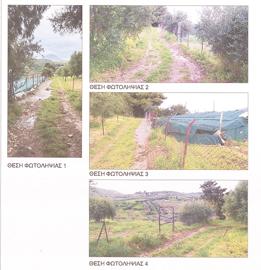The archaeological dig revealed findings that reassess and increase the value of the Minoan Palace – “They shed light on aspects of Cretan civilization”, says the person in charge of the excavation
A great donation is underway for him municipality of Heraklionu as in two plots of land in Knossos extremely important antiquities have been found with findings from the religious center of Knossos and the excavator, the former Director of the Archaeological Museum of Heraklion, Mrs. Athanasia Kanda.
The plots in question are located in the area of Bougada Metohi in the 1st Archaeological Zone of Knossos and belong to two Cretan private individuals. It’s about unique properties in terms of the wealth of antiquitiesaccording to Ms. Kanda’s great findings.
In fact, some of these antiquities have been exhibited in a Museum in Athens and in the Ashmolean Museum in Oxford, which has antiquities from the Evans period.
The purchase of the properties will be financed by the Institute of Aegean Prehistory, which will cover all the costs of their acquisition from the municipality of Heraklion, which is a condition of the Central Archaeological Council, in order to continue the excavation process. The cost amounts to 50,000 euros for the first plot with an area of 1,339 sq.m. and 25,000 euros for the second plot with an area of 219 sq.m.
The municipal council of Heraklion has made a decision to pay the notary, the tax and the Land Registry. However, the tax is zero, the notary will not receive any money, so the municipality will only pay the fee to register the plots in the Land Registry.
There has already been an audit by the Suitability and Property Valuation Committee, which agreed with the price and suitability of the plots.
The Institute, the notary public Mr. Aristophanes Boutourakis, the Legal Service and the Department of Municipal Property of the municipality of Heraklion as well as the previous deputy mayor Mr. Manolis Vassilakis, have completed the preparation for the signing of the contract and only the appointment by the new Municipal Authority of the deputy mayor who will sign the contract.
The contract will be made with the municipality of Heraklion as the buyer and the Director of the Aegean Studies Institute Mr. Thomas Brogan as the third party, who will pay the price to the private owners of the plots. In this way, the municipality acquires two important plots of land which it will make available to the Archeology of Heraklion.
Athanasia Kanda: “We have located the religious center of the ancient city of Knossos”
Mrs. Athanasia Kanda, Honorary Director of Antiquities of the Regional Unit of Heraklion, tells Cretalive that the timeliness of the finds that start from 2,000 BC is of great interest. and reach up to the Christian times, going through the Minoan, Mycenaean times, the early Iron Age, the Archaic, the Classical and Hellenistic times as well as the Roman and early Christian years.
“We have identified the religious center of the ancient city of Knossos. The findings span many centuries with attested religious use. It is extremely rare to find timelessness in the same place and over such a long time. Timelessness passes through the memory of the sanctity of the space and through the sequence of civilizations that succeed each other” she points out.
“They shed light on aspects of Cretan culture”
In her letter to the municipality of Heraklion, Mrs. Athanasia Kanda notes that: “in the modern settlement of Knossos Bougada Metohi, in an excavation that I conducted, from 2011 to 2017, with funding from the Institute of Aegean Prehistory, the religious center of of the ancient city of Knossos, with a unique to this day duration of worship from 1,800 BC. until at least the 3rd AD century. These are two parcels of land where unique finds from all eras were found which shed light on aspects of Cretan culture.
Findings from 1,700-1,500 BC are characteristically mentioned, such as the elephant scepter of religious-ritual use recorded on all sides with inscriptions of Linear Script A. This is the largest inscription of Linear A that has been found to date. Also found was the chamber opening containing precious materials in small bars, gold, silver, amethyst, lapis lazuli beads of copper talent, double pelecei of gold, silver, copper. A great surprise was caused by the finding of a double blade made of iron.
This is the first time such an early elaborate object has been found from this metal, the use and production of which begins much later, especially after 1,100 BC. Another very important find is the small stone record seal with Cretan Hieroglyphic Script.
A unique find in Crete from the Religious Center of the city of Knossos, is a sword decorated with golden griffins dating to 1,400-1,380 BC. which had been deposited as an opening in a small Mycenaean sanctuary. A series of Roman statues and statuettes of fine art were also found. The preservation of the unique architectural remains that have been found is absolutely essential. The Central Archaeological Council has approved the five-year continuation of the investigation of the site on the condition that the two parcels of land where these important antiquities have been found will belong to the Greek State and not to private individuals.”
Source: Skai
I have worked as a journalist for over 10 years, and my work has been featured on many different news websites. I am also an author, and my work has been published in several books. I specialize in opinion writing, and I often write about current events and controversial topics. I am a very well-rounded writer, and I have a lot of experience in different areas of journalism. I am a very hard worker, and I am always willing to put in the extra effort to get the job done.












